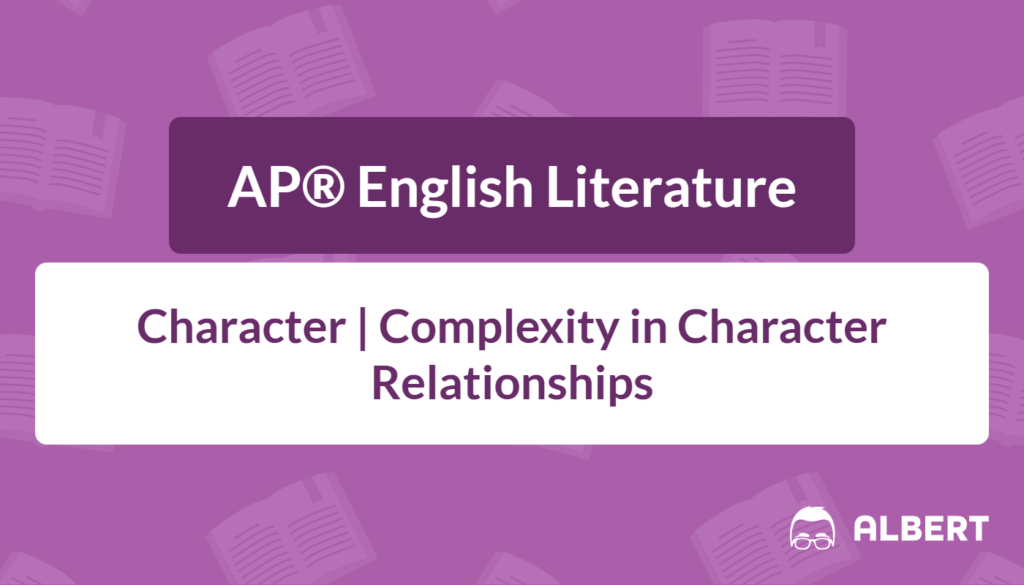What We Review
Understanding Character Dynamics in Literature
Character interactions are at the heart of many compelling stories. A close look at these interactions—often called character dynamics—can reveal how individuals change and influence one another over time. This post explores what these dynamics are, why they matter, and how to spot them. By the end, the goal is to help students recognize how textual details reveal the nuances in characters’ relationships and prepare for the AP® Literature exam.
What Are Character Dynamics?
The term character dynamics describes the shifting relationships and connections between characters. These connections are not just about who likes or dislikes whom. Instead, they focus on how characters’ views, motivations, and actions change as they respond to each other and to events in the plot.
In Tim O’Brien’s short story collection The Things They Carried, the soldiers’ interactions highlight the complexities of trust and fear in wartime. Consider the moments when Lieutenant Jimmy Cross worries about whether he has led his men properly. The narrator mentions that Cross “carried the responsibility for the lives of his men,” illustrating the weight of caring for others in life-or-death situations. Observing how Cross and his men shift from camaraderie to frustration under stress offers a powerful example of character dynamics at work.
Key Elements of Character Dynamics
Character Development
Character development traces the ways individuals grow or regress throughout a narrative. Sometimes a character might gain courage, while another loses hope. Watching their choices, emotions, and outlook unfold can help readers see how they respond to new challenges.
In The Awakening by Kate Chopin, Edna Pontellier initially appears to accept her society’s expectations. However, over time, she discovers a longing for personal freedom. Though The Awakening is a short novel rather than a short story, it still exemplifies how authors craft transformative moments. When Edna first realizes, “I would give my life for my children; but I wouldn’t give myself,” Chopin shows crucial tensions between maternal duty and selfhood. This shift in Edna’s perspective reveals her internal struggle and growth, illustrating the power of thoughtful character development.
Character Conflict
Every strong narrative includes character conflict, which can be internal or external. Internal conflict occurs when a character wrestles with personal beliefs or desires. External conflict, by contrast, appears in disagreements or tensions with outside forces—like other characters or society.

In “A Rose for Emily” by William Faulkner, both internal and external conflicts shape Emily Grierson’s character. Externally, she faces pressure from the townspeople and her controlling father, who isolates her from potential suitors and normal social interaction. Internally, Emily struggles with abandonment, change, and the passage of time. Her refusal to release her father’s body after his death—and later, her eerie attachment to Homer Barron—reflects a deep psychological resistance to loss and change. Through these layered conflicts, Faulkner creates a complex portrait of a character shaped by social expectations and personal trauma.
Interpersonal Relationships
Interpersonal relationships often form the emotional core of a story. How characters speak to each other, share secrets, or hide truths can show how they evolve. These relationships are especially significant in short fiction, where every interaction carries weight in a limited space.
In the short story “Speaking of Courage” from The Things They Carried, Norman Bowker struggles to express his war experiences to those at home. He drives around a lake, imagining conversations with others who might understand. This isolation highlights how the lack of genuine interpersonal connections can intensify internal conflict. Even though Bowker’s attempts to communicate are mostly imaginary, these attempts reveal how deeply the bonds formed on the battlefield still affect him.
Analyzing Character Relationships
Identifying Relationship Patterns
One way to analyze character dynamics is to look for patterns in how characters interact. A pattern might appear in repeated arguments, secret confessions, or subtle gestures. Tracking these patterns helps readers notice how people change over time.
In Flannery O’Connor’s Everything That Rises Must Converge, the strained relationship between Julian and his mother is revealed through recurring conversations filled with sarcasm, frustration, and competing worldviews. Julian believes himself to be progressive and enlightened, while his mother clings to outdated, prejudiced social ideals. Their ride on the bus becomes a stage for emotional tension, culminating in a moment of tragic reversal. The repeated instances of Julian trying to “teach her a lesson”—while still relying on her—highlight the complexity of familial bonds and personal hypocrisy.
Recognizing Symbolism in Relationships
Sometimes, the best way to see character dynamics is through symbols woven into connections between characters. A vivid image, recurring object, or repeated phrase can hint at deeper meaning beneath the surface.
In Shirley Jackson’s The Lottery, the black box serves as a powerful symbol of tradition and communal violence. Though villagers like Mr. and Mrs. Hutchinson interact with one another in a seemingly routine, even friendly way, the ritual surrounding the box reveals a darker dynamic of conformity and suppressed guilt. The casual tone with which the townspeople treat the lottery contrasts sharply with its deadly outcome, exposing the tension between surface-level civility and deeper complicity. Watching how characters respond to the box—and to each other during the drawing—uncovers the disturbing undercurrents in their relationships.
Practical Steps for Analyzing Character Dynamics
- Step 1: Read closely and take notes on interactions
- Look for conversations and descriptions that show how characters feel about each other. Pay attention to dialogue exchanges and narrative commentary.
- Step 2: Identify key quotes that reveal relationships
- Short quotes can serve as anchors for analysis. Highlight lines that sum up a character’s attitude or emotional state.
- Step 3: Reflect on how characters change
- Notice if any characters alter their goals, outlook, or tone. Ask whether they grow or withdraw when facing challenges.
- Step 4: Compare interpretations with peers
- Different readers see interactions in unique ways. Sharing observations can deepen understanding and ensure no detail is overlooked.
Tracking these steps can help reveal how character conflict fuels change. It also exposes thematic elements by demonstrating how personal values clash or unite in crucial moments of the plot.
Quick Reference Chart of Key Vocabulary
Below is a chart of important terms connected to character dynamics that often appear in AP® Literature discussions.
| Term | Definition or Key Features |
| Character Development | How a character evolves in response to conflicts or revelations. Shows growth, regression, or resistance. |
| Foil | A character who contrasts with another, emphasizing particular traits or choices. |
| Motivation | The driving force behind a character’s actions, often tied to desires, fears, or moral beliefs. |
| Conflict (Internal) | A struggle within a character, such as moral dilemmas, fears, or competing emotions. |
| Conflict (External) | Challenges with outside elements: other characters, society, nature, or technology. |
| Symbolism | Use of objects, images, or repeated phrases to represent deeper ideas or relationships. |
| Subtext | Underlying meanings or implications in dialogue or interactions that are not directly stated. |
Conclusion
Paying close attention to character dynamics opens doors to deeper insights into why events unfold the way they do. Whether reading short fiction like The Things They Carried or tackling classic drama, noticing small but significant interactions reveals layers of complexity. By spotting patterns in dialogue, using textual evidence for support, and interpreting symbolic details, students can offer more nuanced analyses in essays and discussions. This approach enriches understanding of character development, character conflict, and other crucial elements of literature, making any reading experience more meaningful and preparing for success on the AP® Literature exam.
Sharpen Your Skills for AP® English Literature and Composition
Are you preparing for the AP® English Literature and Composition test? We’ve got you covered! Try our review articles designed to help you confidently tackle real-world AP® English Literature and Composition problems. You’ll find everything you need to succeed, from quick tips to detailed strategies. Start exploring now!
- AP® English Literature: Character Analysis
- AP® English Literature: Character Development
- AP® English Literature: Foil Character
- AP® English Literature: Complex Character
Need help preparing for your AP® English Literature and Composition exam?
Albert has hundreds of AP® English Literature and Composition practice questions, free response, and full-length practice tests to try out.








